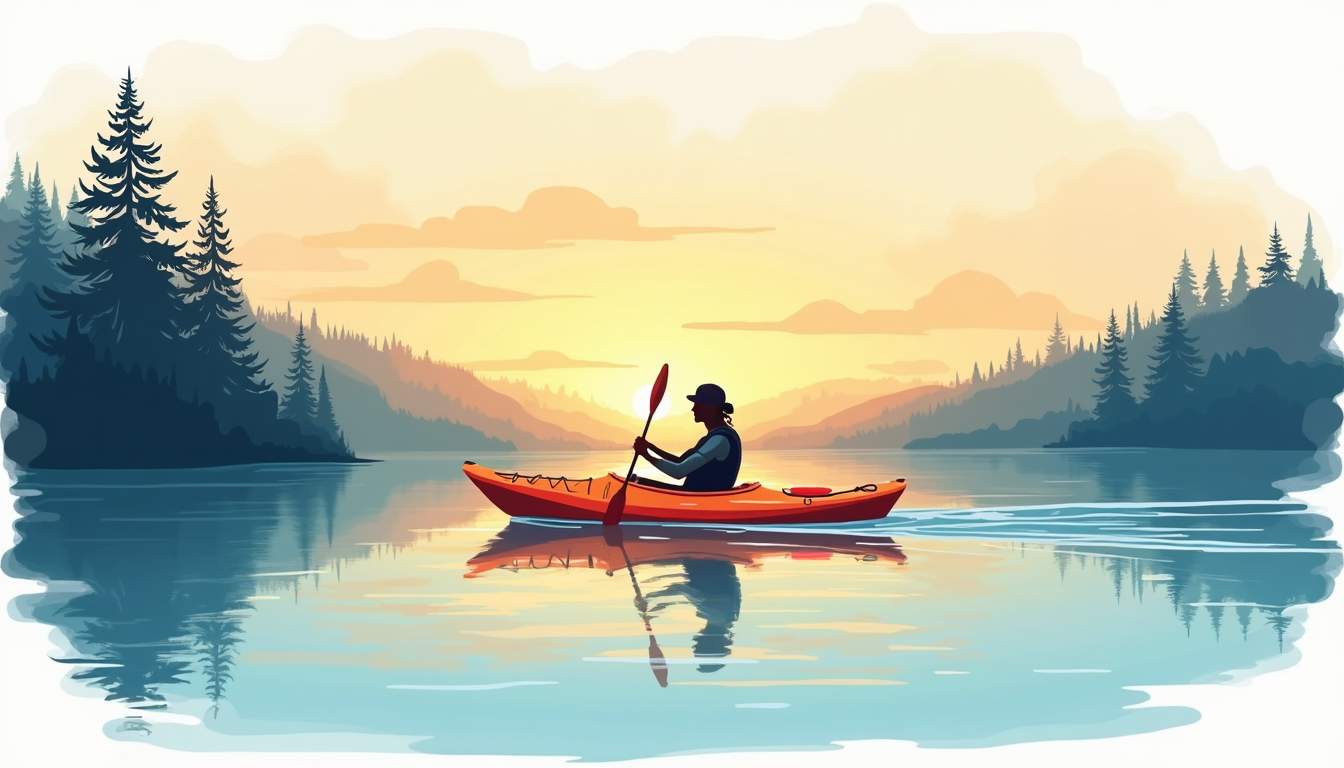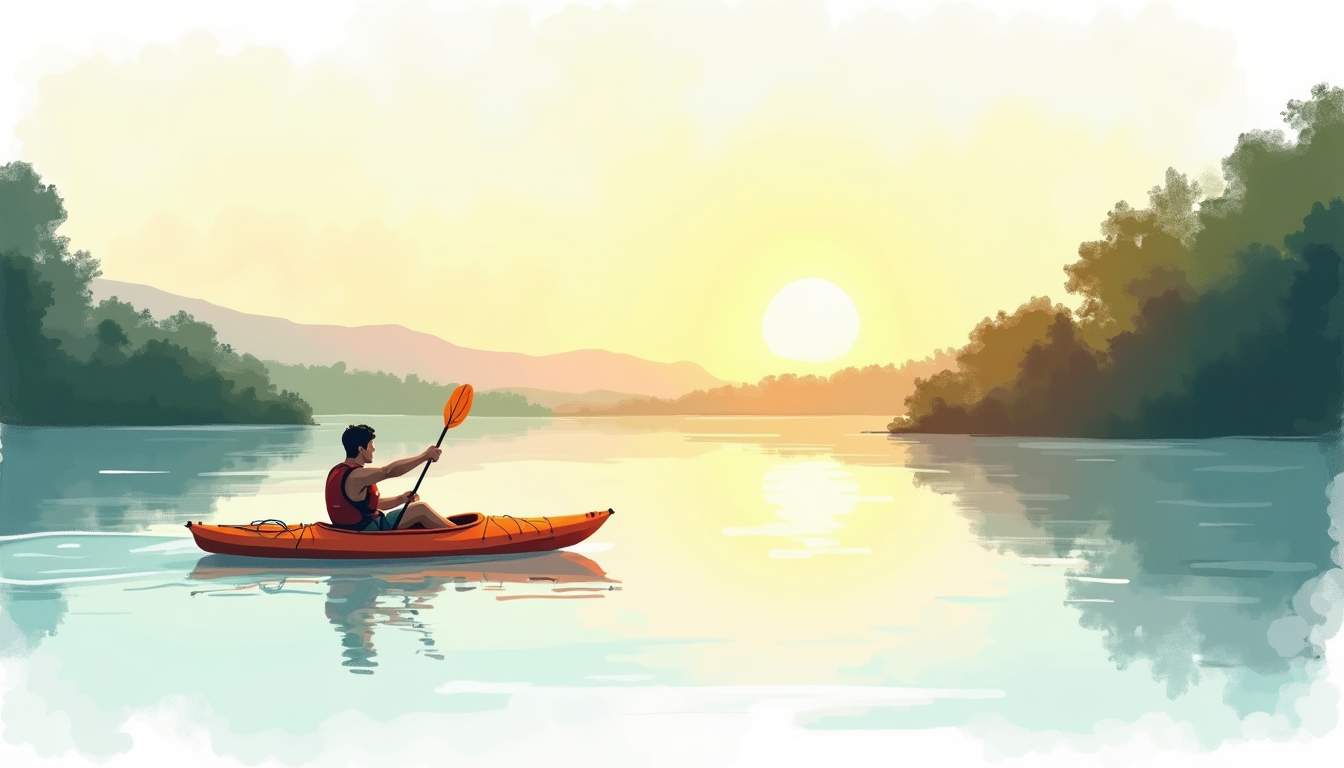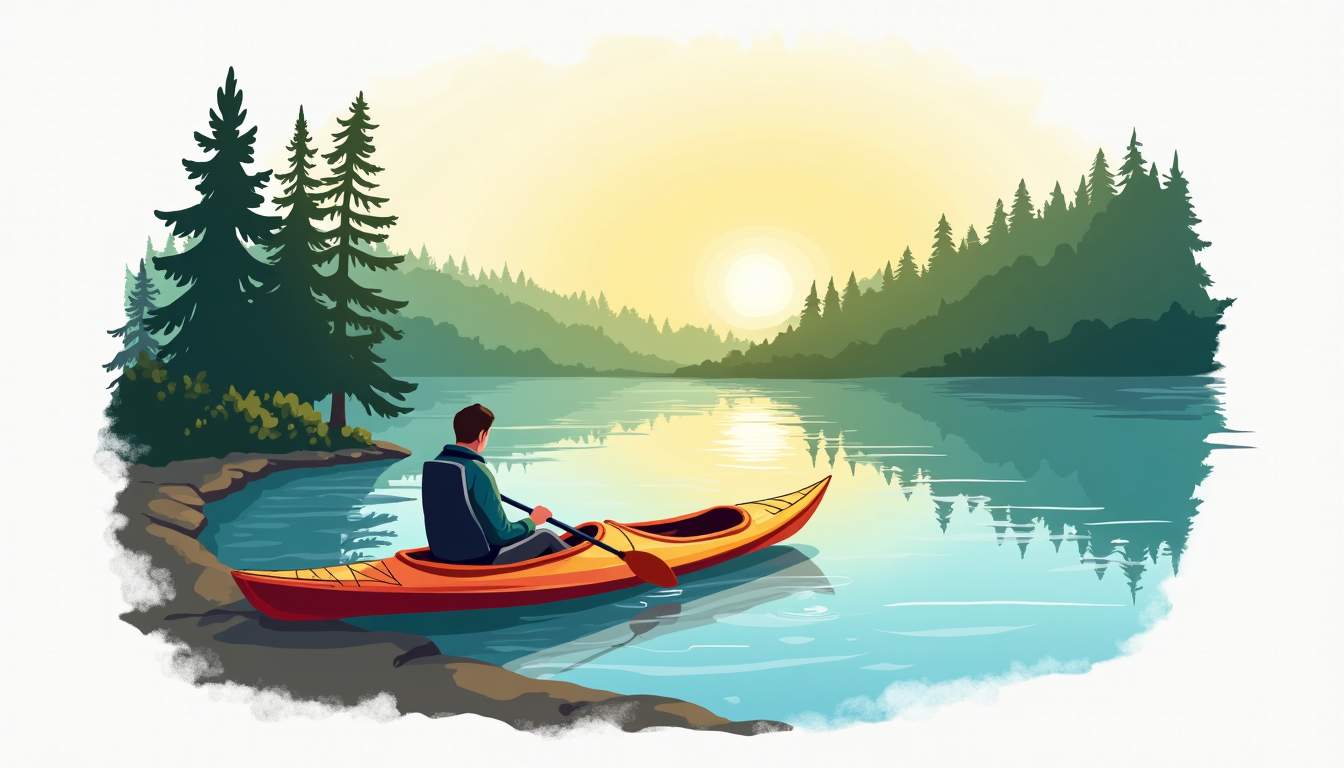
There is a particular kind of happiness that arrives when a paddle breaks the glassy surface of a lake, a river threads its way through sunlit banks, or a sea breeze pushes a kayak toward the horizon. Paddle sports—canoeing, kayaking, stand-up paddleboarding—offer a simple, accessible route to better health, mental clarity, and a renewed sense of wonder. This article explores why paddling delights so many, how to get started safely, and how to deepen the joy once the basics are mastered.
Paddling taps into something profoundly human: the urge to move across water. Motion is rhythmic and meditative, and water provides a receptive, constantly changing environment that stimulates both body and mind. The sensory elements—splash, breeze, birdsong, the shimmer of light—create an immersive experience that distracts from worries and draws attention to the present moment.
The physical effort required is balanced with ease. A steady stroke becomes almost automatic, muscles settling into an efficient pattern. This blend of exertion and flow releases endorphins and reduces stress hormones, which helps explain the persistent smile paddlers often wear. There is also the satisfaction of learning new skills—navigating currents, reading wind patterns, or executing a smooth turn—which rewards practice and fosters confidence.
Paddling is social without demanding constant conversation. Groups move together, sharing the same landscape while allowing silence to coexist with laughter. The pace invites conversation that is relaxed and meaningful; side-by-side travel removes the need for forced eye contact and enables natural dialogue. Packed into those shared outings are memories: first trips, sunsets, the sighting of wildlife, and the inside jokes that form in the quiet between strokes.
Paddling is a full-body workout that is gentle on joints. Upper body muscles—shoulders, back, and arms—get most of the action, but core muscles play a stabilizing role and legs contribute balance. This combination builds strength, improves posture, and enhances endurance. Regular paddling also boosts cardiovascular fitness without the high-impact strain associated with running or some team sports.

The mental health benefits are equally compelling. Time spent in natural settings is linked to reduced anxiety, improved mood, and enhanced cognitive function. The meditative quality of paddling, where attention narrows to breath, rhythm, and environmental detail, helps calm the nervous system and improves sleep quality. For people seeking low-cost, sustainable ways to manage stress, paddling is uniquely effective: it combines exercise, nature exposure, and social connection in a single activity.
One of paddling’s strengths is adaptability. Gentle, flat-water paddling offers a low-intensity option for beginners or people returning from injury. For those craving more challenge, whitewater or sea kayaking and long-distance touring provide intense, skill-based workouts. Stand-up paddleboarding adds balance and core work, and the boards can double as platforms for yoga or fishing. This scalability keeps paddling engaging for years.
Selecting a kayak, canoe, or paddleboard starts with understanding goals and local conditions. Recreational kayaks and wide, stable boards are excellent for calm lakes and easy coastal outings. Touring kayaks and narrower boards suit longer trips with better tracking and speed. Canoes offer spaciousness and gear capacity for overnight trips, while packable inflatable options bring convenience for travel and storage.
Key factors include stability, tracking (how straight a craft moves), weight, and storage space. For beginners, stability is often the most important; a stable craft builds confidence and reduces the likelihood of capsizing. Lightweight materials—rotomolded plastic for kayaks, foam or composite for boards—balance durability and portability. When purchasing or renting, attention should be paid to proper sizing: a kayak that’s too long or a board that’s too narrow can make initial outings frustrating.
A personal flotation device (PFD) is essential for every trip, regardless of swimmers' confidence. Wearing a PFD designed for paddling ensures buoyancy without restricting stroke movement. Additional gear includes a whistle, helmet when tackling whitewater, leash for stand-up paddles, and appropriate clothing for water temperature. A dry bag keeps essentials safe and a bilge pump or sponge is useful in kayaks. For coastal outings, a VHF radio or personal locator beacon can provide security on remote water.
Before venturing far, mastering a handful of skills makes outings safer and more enjoyable. Practice basic paddling strokes—forward stroke, sweep stroke for turning, and draw strokes for moving sideways. Learn to brace and balance; these techniques prevent capsizing and build confidence in waves or wind. For kayakers, knowing how to perform a wet exit and a self-rescue or partner-assisted rescue is crucial.

Reading water and weather improves decision-making. Understanding wind direction, current patterns, and the signs of changing weather can prevent unexpected troubles. Local knowledge—where rocks or shallow shelves exist, or where tides create strong flows—further enhances safety.
Start near shore where footing is accessible and progression feels manageable. Short practice sessions, focused on one skill at a time, yield better retention than long, unfocused outings. Joining a local paddling club or taking a course accelerates learning and provides structured feedback. Many communities offer beginner clinics, rescue workshops, and guided trips to build competence in a supportive environment.
Each type of water offers its own rewards. Lakes invite serene exploration and quiet mornings. Rivers bring variety and the simple thrill of moving with the current. Coastal paddling opens wide horizons and opportunities to watch marine life, but also requires respect for tides and wind. Whitewater adds excitement and demands precise technique and quick decision-making. The variety keeps paddling fresh: the same paddle can take someone on a meditative dawn glide one week and an adrenaline-fueled run the next.
Paddling is a year-round activity in many regions. Spring brings rushing rivers and abundant birdlife; summer offers warm water and long days; autumn presents vivid foliage and mellower crowds; winter paddling, when done with the right gear, provides crisp air and reflective solitude. Seasonal shifts change the soundtrack and palette of any paddling trip, making each outing feel new.
Effective trip planning balances objective demands—distance, supplies, safety—with the softer aim of creating meaningful experiences. Choose a destination that matches skill level, plan a realistic route, and allow time for breaks to soak in scenery. Bring snacks that are easy to eat on the water and a thermos for warm drinks in cold months. Photographing moments is fine, but avoiding constant documentation keeps the senses present.
Overnight excursions add a layer of adventure. Lightweight camping setups can fit in a canoe or kayak designed for touring, and waking to mist on the water is an unforgettable reward. When overnighting, practice packing efficiently, secure gear properly, and plan for weather changes. Respect for Leave No Trace principles helps preserve the environments that make these trips possible.
Group trips benefit from clear communication and shared expectations. Establish a route plan, set pacing guidelines, and identify signals for regrouping. For families with children, choosing short, scenic routes and bringing simple wildlife-spotting games keeps young paddlers engaged. Safety rules—PFDs for everyone, buddy systems, and staying within sight—ensure that fun stays safe.
Paddlers often form tight-knit communities that share knowledge, host events, and advocate for water access and conservation. Clean-up paddles, citizen science projects, and habitat restoration events connect recreation with stewardship. These activities enrich paddling by tying personal pleasure to collective responsibility, ensuring that waterways remain healthy and accessible for future paddlers.
Advocacy can be as simple as supporting local access initiatives, participating in shoreline cleanups, or educating newcomers about sustainable practices. Protecting water quality and shorelines preserves not just the sport but the biodiversity and beauty that enrich each outing.
Long after a trip ends, the stories live on: the unexpected encounter with a heron, the laugh when a group navigates a tricky current, the taste of a first warm drink after a cold morning paddle. These memories accumulate and shape identities, turning casual outings into a lifelong passion. Sharing these stories—over photos, in clubs, or with children at bedtime—extends the joy and invites others to experience the same pleasures.
For those curious but unsure where to begin, local paddling shops, outfitters, and clubs provide accessible entry points. Rental gear removes the commitment of buying equipment before trying the sport. A guided introductory trip offers technique tips, safety basics, and an easy pathway into the community. Many towns have dedicated access points and launch areas with gentle water to build confidence.

Minimal equipment is needed to start: a well-fitting PFD, a suitable craft chosen for stability, and appropriate clothing for the day's temperature. From there, focus on gradual progression—short, regular outings build skills and deepen enjoyment. Over time, the simple act of paddling can grow into a reliable source of joy and wellbeing.
Paddling is more than recreation; it is a return to elemental pleasure: moving through water, attuned to wind and light. Whether choosing a quiet morning lake glide, a coastal exploration, or a lively river run, the craft and rhythm of paddling invite discovery, fitness, and calm. The next stroke brings another moment of possibility—another chance to paddle into joy.
Embrace the joy of paddling surrounded by the stunning natural beauty of Tennessee National. Our luxurious gated community offers waterfront access, scenic trails, and a vibrant lifestyle that perfectly complements your love for water and outdoor adventures. Whether you're seeking a move-in ready home or a custom build, find your ideal retreat where every day invites new memories on and off the water. Schedule a Private Tour today and paddle into your dream lifestyle.